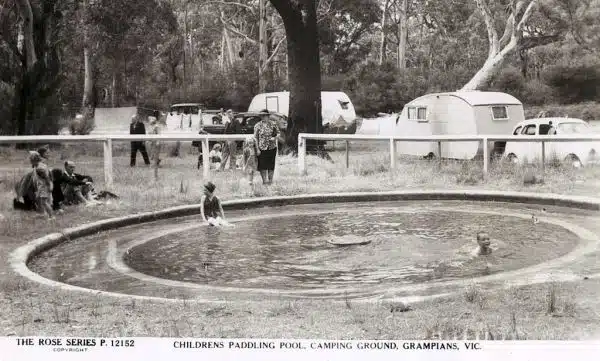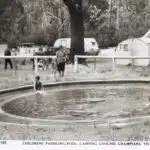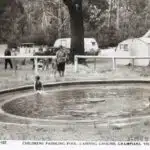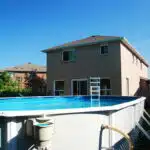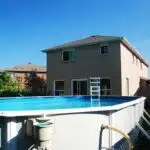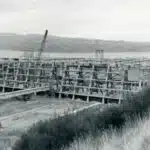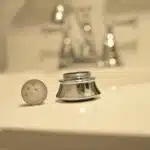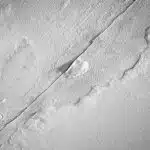As the leaves change colors and the days get shorter, pool owners must start thinking about winterizing their in-ground pools. Preparing your pool for the colder months is a crucial step to ensure that it remains in good condition and ready for use when summer returns. However, winterizing an in-ground pool can be a daunting task for those who are unfamiliar with the process.
As a pool winterization expert, I understand the importance of properly preparing your pool for winter. Neglecting this task can lead to costly repairs and even irreversible damage to your pool’s equipment and structure. In this article, I will share my expertise on how to winterize an in-ground pool, providing you with all the necessary steps and tips to ensure that your pool remains safe and well-maintained throughout the cold season.
Understanding The Importance Of Winterizing Your In-Ground Pool
As a pool winterization expert, it is important to understand the significance of winterizing your in-ground pool. Ignoring the task could result in numerous problems such as frozen pipes and equipment damage. Winterizing your pool also ensures that the water does not freeze inside the pool, which could cause cracks and other structural issues.
The benefits of winterizing an in-ground pool far outweigh any costs or time factors associated with the process. Winterizing your pool helps to protect it from harsh weather conditions and extends its lifespan. It also saves you money on repairs that may be required if the pool is not properly maintained during colder months.
It is crucial to take into account several factors when considering winterizing your in-ground pool. The cost of supplies and time required for the process should be considered beforehand. However, these costs are minimal compared to potential damages that could occur if proper precautions are not taken. Therefore, investing in winterizing supplies and taking the necessary steps towards protecting your investment is essential for ensuring that your pool remains functional for years to come.
With an understanding of why it’s important to winterize an in-ground pool, let’s dive into gathering the necessary supplies needed for this process.
Gathering The Necessary Supplies
Gathering the necessary supplies is a crucial step in winterizing an in-ground pool. Without the right tools, the process can be frustrating and time-consuming. However, with some shopping tips and budget-friendly options, you can easily gather everything you need for this task.
To begin with, make sure you have all the essential equipment such as a pool cover, winterizing chemicals, skimmer plugs, and antifreeze. It’s important to purchase these items from a reputable supplier to ensure their quality. You can find them at your local pool supply store or online retailers like Amazon.
When shopping for winterizing chemicals, look for those that are specifically designed for your type of pool. For example, saltwater pools require different chemicals than traditional chlorine pools. Additionally, consider buying these items in bulk to save money in the long run. Budget-friendly options such as generic brands or off-season sales can also help keep costs down.
Now that you have gathered all of your supplies needed for winterizing your pool— from the cover to the chemicals—it’s time to move onto removing debris and lowering the water level.
Removing Debris And Lowering The Water Level
Just like a soldier equips himself with the necessary gear before heading off to battle, so too must you equip yourself with the necessary supplies before winterizing your in-ground pool. Now that you have all the necessary gear, it’s time to get started with the actual process of winterizing your pool.
The first step in this process is removing any debris from your pool. Dealing with leaves can be a bit of a chore, but it’s essential if you want to prevent any damage to your pool over the winter months. Use a skimmer net or leaf rake to scoop up as much debris as possible. If there are a lot of leaves at the bottom of the pool, use a vacuum to suck them up.
Once you’ve removed all the debris from your pool, it’s time to start lowering the water level. This will help prevent any damage caused by freezing water and also give you room to add winterizing equipment later on. You can use your filter system or a submersible pump to lower the water level below the skimmer and return lines. It’s important not to drain too much water from your pool as this could cause damage to the structure.
As we move forward in our quest to winterize an in-ground swimming pool, let’s now focus on draining its plumbing system.
Draining The Pool’s Plumbing System
1.Draining the plumbing system is an essential step in winterizing an in-ground pool. 2.The first step in draining the plumbing system is to identify the shut-off valves and ensure they are in the closed position before beginning. 3.After the shut-off valves have been identified and closed, the next step is to bypass the filter system. 4.Bypassing the filter system involves disconnecting the pump from the filter and connecting the hoses to the return line directly. 5.It is important to ensure that the water is drained from the pool, filter, and pump by disconnecting the hoses and allowing the water to drain. 6.Finally, the filter system must be blown out with an air compressor to ensure all the water is removed and no damage will occur during the winter months.
Draining The Plumbing System
As a pool winterization expert, one of the most critical tasks in preparing an in-ground pool for winter is draining the plumbing system. This process involves removing all water from the pool’s plumbing to prevent any damage or cracking during freezing temperatures. It is essential to prioritize plumbing maintenance during this stage to ensure that everything runs smoothly when reopening the pool in the spring.
Winterization safety should also be a top priority when draining the pool’s plumbing system. To start, turn off all electrical power sources and gas lines connected to the pool equipment. Next, locate and open all drain valves and plugs on your pump, filter, heater, and other equipment to release any remaining water. Be sure to wear protective gloves and eyewear throughout this process to avoid injury.
In conclusion, properly draining the pool’s plumbing system is a crucial step in winterizing an in-ground pool. Prioritizing plumbing maintenance and winterization safety will ensure that your pool remains in excellent condition throughout the colder months. A little extra effort now will save you time and money come springtime!
Identifying Shut-Off Valves
Draining the pool’s plumbing system is a crucial part of winterizing an in-ground pool. It involves removing all water from the pool’s plumbing to prevent damage or cracking during freezing temperatures. However, before you begin this process, it is essential to identify and locate the shut-off valves in your pool’s plumbing system.
Identifying valve types and locating valve access points are necessary steps in finding the shut-off valves. There are different types of valves, including ball valves, gate valves, and butterfly valves. The location of these valves can vary depending on your specific pool setup. Common access points include near the pump, filter, heater, or other equipment that uses water circulation.
Once you have identified and located all shut-off valves in your pool’s plumbing system, it will be easier to drain the water properly. It is crucial to prioritize winterization safety throughout this process by turning off all electrical power sources and gas lines connected to the pool equipment. By taking these steps, you can ensure that your pool remains in excellent condition throughout the colder months while also avoiding any potential injuries during winterization.
Bypassing The Filter System
As a pool winterization expert, draining the pool’s plumbing system is a crucial step in preparing your in-ground pool for the cold winter months. This process involves removing water from the pool’s plumbing to prevent any damage or cracking due to freezing temperatures. While identifying and locating shut-off valves is essential, there are alternative methods that you can consider, such as bypassing the filter system.
Bypassing the filter system can be an effective way of draining your pool’s plumbing system without going through the hassle of dismantling and removing all parts of the filter. This method involves using a valve to redirect water flow around the filter instead of through it. The pros of this method include less time and effort spent on winterizing, and it also helps prolong your filter’s lifespan by protecting it from any damage during winter months. However, one downside is that bypassing the filter system may not be suitable for all types of filters, so be sure to double-check before proceeding with this method.
In conclusion, while draining your pool’s plumbing system is necessary for winterization, you may want to consider alternative methods like bypassing the filter system for more efficient and straightforward options. As always, prioritize safety throughout this process by turning off all electrical power sources and gas lines connected to your pool equipment before beginning any work. By taking these steps, you can ensure that your in-ground pool remains in excellent condition throughout the colder months while also avoiding any potential injuries during winterization.
Blowing Out The Lines
Blowing Out the Lines:
The next step in winterizing your in-ground pool is to blow out the lines. This process involves using an air compressor to push all of the water out of the pool plumbing. This is important because any leftover water can freeze and cause damage to your pipes or equipment during the winter months.
To begin, turn off the pump and filter system, and then locate the valve that controls water flow from the pool to the pump. Next, attach a hose from the air compressor to this valve and turn on the compressor. You will need to blow air through each line until all of the water has been removed.
It’s important to note that you should never use too much pressure when blowing out your pool lines with an air compressor. This can damage your plumbing or equipment, leading to costly repairs later on. It’s also a good idea to wear ear protection while performing this task as compressors can be quite loud.
- Use caution when working with an air compressor.
- Ensure that all valves are properly closed before beginning.
- Take time to properly inspect all lines for leaks or cracks before proceeding.
In summary, blowing out your pool lines with an air compressor is a crucial step in preparing your in-ground pool for winter months. By following these steps carefully and taking extra precaution, you can ensure that your plumbing remains intact throughout the colder season.
As we move on to our next section about adding antifreeze, it’s important to remember that proper winterization techniques will not only help protect your investment but also save you money in potential repairs down the line.
Adding Antifreeze
Using antifreeze is a popular method to winterize in-ground pools. It helps protect the pool’s plumbing system from freezing temperatures, which can cause costly damages. However, there are pros and cons to using antifreeze that should be considered before making a decision.
One advantage of using antifreeze is its effectiveness in preventing water from freezing in the plumbing system. Antifreeze has a lower freezing point than water, so it can withstand colder temperatures without solidifying. This makes it an ideal solution for areas where harsh winters are common. On the other hand, one disadvantage of using antifreeze is that it can be harmful to the environment if not disposed of properly. Additionally, some types of antifreeze contain toxic substances that can pose a risk to pets and wildlife.
If you prefer not to use antifreeze, there are alternative methods available. One option is to blow out the plumbing lines with compressed air to remove any remaining water. Another method is to add pool closing chemicals that help prevent freezing and corrosion in the plumbing system. These alternatives may be more environmentally friendly but may require more time and effort.
Now that you have learned about using antifreeze for winterizing your in-ground pool, it is time to move on to disconnecting and storing pool accessories. Properly storing your pool equipment during the off-season will ensure they last longer and are ready for use when you open your pool again next year.
Disconnecting And Storing Pool Accessories
After adding antifreeze to your in-ground pool, it’s time to start thinking about disconnecting and storing all of your pool accessories. This is an important step in preventing winter damage to your equipment and ensuring that everything is in good condition when you open your pool back up in the spring.
The first thing you’ll want to do is remove any ladders, diving boards, or other removable accessories from the pool. Once these items are removed, give them a thorough cleaning with mild soap and water. Make sure they are completely dry before storing them in a dry, covered area for the winter.
Next, it’s time to take care of any non-removable accessories such as skimmers and pumps. You’ll want to drain all water from these items and then use a shop vac or air compressor to blow out any remaining water. Cover them with an insulated cover or wrap them with insulation material to prevent freezing temperatures from causing damage.
- Carefully store all attachments and hoses in labeled containers.
- Use a cover pump or siphon to remove excess water from your winter cover throughout the season.
- Consider purchasing a floating pool alarm for added safety during the winter months.
- Regularly check on your stored equipment throughout the winter season to ensure there has been no damage.
By taking the time to properly store your pool accessories, you can prevent costly damage from occurring during the winter months. In the next section, we will discuss how to install a winter cover which will further protect your investment while keeping unwanted debris out of your pool.
Installing Winter Covers
Winter is coming, and it’s time to start preparing your in-ground pool for the colder months. A crucial step in the winterization process is installing a winter cover. Not only does it protect your pool from debris and harsh weather conditions, but it also helps prevent algae growth and keeps your water clean for opening season.
When choosing covers, there are several options available on the market. Standard covers are the most common type and come in different materials such as vinyl or mesh. Mesh covers allow water to pass through while blocking debris, whereas vinyl covers are impermeable. Safety covers are another option that provides added protection by preventing anyone from accidentally falling into the pool. Whichever cover you choose, make sure it fits snugly over your pool to provide maximum protection.
Once you’ve chosen a cover, proper maintenance is essential to ensure its longevity and effectiveness. Keep debris off the cover by using a leaf blower or broom regularly. If you have a mesh cover, remove any accumulated water with a pump to prevent damage due to freezing temperatures. Also, check for any wear and tear regularly and patch up any holes or tears immediately.
To secure the cover properly, use tension springs or anchors around the perimeter of your pool. Make sure they’re properly tightened to keep the cover in place during strong winds or heavy snowfall. This ensures that your pool remains protected throughout the winter months until it’s time for opening season again.
Securing The Cover
- Choosing the right winter cover for an in-ground pool is critical to ensure protection from the elements and debris throughout the winter months.
- In-ground pool covers come in various sizes and materials, making it important to measure the pool and select the appropriate cover for the size and shape.
- Securing the cover is also essential for proper winterization of an in-ground pool, and can be done using a variety of methods such as water tubes, cover clips, and cover weights.
- It is recommended to use a combination of these methods when securing the cover to ensure a secure fit and to help prevent damage from wind and animals.
Choosing A Cover
When it comes to winterizing an in-ground pool, one of the most crucial steps is securing the cover. Choosing the right type of cover for your specific pool can make all the difference in protecting it from harsh winter weather and debris. There are several types of covers available on the market, including mesh, solid, and safety covers.
Mesh covers are a popular choice as they allow water to drain through while keeping debris out. However, they require more maintenance as leaves and other debris can accumulate on top of them over time. Solid covers offer better protection against debris but may require a pump or siphon to remove any excess water that accumulates on top. Safety covers not only keep debris out but also provide a barrier for children or pets who may accidentally fall into the pool.
Regardless of which type of cover you choose, regular maintenance is essential to ensure its effectiveness throughout the winter season. Be sure to clean and dry your cover before storing it away for next year. Additionally, inspect it for any tears or holes that may need patching before installing it again next winter. By investing in a high-quality cover and properly maintaining it each year, you can protect your in-ground pool from costly damage caused by winter weather and debris buildup.
Securing The Cover
Choosing the right cover for your in-ground pool is crucial in protecting it from harsh winter weather and debris. However, securing the cover properly is just as important to ensure that it remains effective throughout the winter season. Improperly secured covers can lead to damage caused by wind, rain, snow or debris buildup. As a pool winterization expert, I highly recommend taking the time to secure your cover correctly.
To secure your pool cover properly, start by removing any leaves or debris from the surface of your pool water. Next, carefully stretch the cover over the entire area of your pool and ensure that it is centered evenly. Use water bags or cable ties to anchor down the edges of the cover securely. It’s also essential to check and tighten any straps or anchors regularly throughout the winter season to prevent any potential damage caused by high winds.
Regular maintenance is critical in ensuring that your cover remains effective throughout the winter season. Inspect your cover periodically for any holes or tears that may need patching before installing it again next year. Additionally, clean and dry your cover before storing it away for next year. By following these steps and choosing a high-quality cover, you can protect your in-ground pool from costly damage caused by winter weather and debris buildup effectively.
In summary, choosing the right type of cover for your specific pool and securing it properly are crucial steps in protecting it from harsh winter weather and debris buildup. Be sure to follow these tips regularly to maintain its effectiveness throughout the winter season successfully. By doing so, you can ensure that you have a safe and enjoyable swimming season when spring arrives!
Monitoring Your Pool During Winter
During the winter months, it is important to monitor your pool regularly to ensure that it stays in good condition. Winter pool maintenance is crucial for the longevity of your pool and will save you from costly repairs in the future. Here are some tips on how to properly monitor your pool during the winter season.
Firstly, be vigilant about removing any debris that accumulates on your pool cover. This not only helps to keep the cover intact but also prevents water contamination from dirty leaves or other debris. You can use a leaf blower or a soft-bristled broom to remove any debris, but be careful not to damage the cover. Additionally, check for any water accumulation on top of the cover and use a submersible pump to remove any standing water.
Secondly, inspect all winter safety equipment such as fencing and covers for any signs of wear and tear. Ensure that gates are locked and secure, preventing unauthorized access by children or pets. It is essential to maintain proper Winter Pool Safety measures throughout the cold months.
Lastly, regularly test your pool water chemistry during winter months and adjust accordingly using appropriate chemicals like algaecide or shock treatment if necessary. Unbalanced pH levels can lead to corrosion and other damages that may require costly repair work come springtime.
- Use a leaf blower or soft-bristled broom to remove debris from your pool cover regularly.
- Check winter safety equipment like fencing and covers for signs of wear.
- Test water chemistry regularly during winter months.
- Adjust chemical levels using algaecide or shock treatment as needed.
By following these simple steps, you can help ensure that your pool remains in great condition throughout the winter season. Proper monitoring and maintenance now will pay off in spades when it’s time to open up again come springtime! Next, we’ll discuss addressing any potential winter damage that may occur despite our best efforts at prevention.
Addressing Any Winter Damage
Assessing winter damage is a crucial step in preparing your in-ground pool for the upcoming season. The first thing to do is to remove any debris that may have accumulated on the pool cover during the winter. This includes leaves, branches, and any other objects that may have fallen onto the cover. Once you have removed all debris, carefully inspect the pool cover for any signs of damage.
If you notice any damage to the pool cover or surrounding areas, it’s essential to repair them before opening your pool in the spring. Some common types of winter damage include cracks in the pool deck or coping, and tears or holes in the pool cover. Addressing these issues promptly can prevent further damage and ensure that your pool is safe for swimming.
To repair winter damage, it’s best to consult with a professional who has experience working with in-ground pools. They can evaluate the extent of the damage and recommend appropriate repairs or replacements. By taking action now, you can avoid costly repairs down the line and enjoy a beautiful, functional swimming pool all summer long.
| Winter Damage | Repair |
|---|---|
| Cracks in Pool Deck or Coping | Hire a professional to assess and repair |
| Tears or Holes in Pool Cover | Patch with an appropriate repair kit or replace entirely if necessary |
Transition: Now that you’ve assessed any potential winter damage and made necessary repairs, it’s time to start thinking about preparing for your spring opening.
Preparing For Spring Opening
- Cleaning the pool is the first step in winterizing an in-ground pool, removing all debris, dirt, and other contaminants.
- Draining the pool should be done according to manufacturer’s instructions, and any antifreeze should be added to exposed pipes.
- Chemical balance must be tested and adjusted to ensure proper winterization of the pool and its components.
- Covering the pool with a tarp or other material is necessary to protect it from debris, animals, and the elements.
Cleaning
Keeping your pool clean during the winter months is crucial in ensuring a smooth and hassle-free spring opening. As a pool winterization expert, I highly recommend investing in quality pool cleaning techniques to keep your pool in good condition. Regular maintenance will also prevent algae growth and other forms of buildup that can damage your pool’s interior.
When it comes to choosing the right cleaning products, it’s important to avoid harsh chemicals that can potentially damage your pool liner or filter system. Opt for gentle cleaners that are specifically formulated for use on pools. You should also consider purchasing a reliable automatic vacuum cleaner to help remove any debris that may have accumulated at the bottom of the pool.
In summary, proper cleaning techniques and product selection are essential in preparing your pool for spring opening. By following these simple steps, you can ensure that your pool remains in excellent condition throughout the winter months, making for an easy transition when it’s time to reopen in the spring.
Draining
As a pool winterization expert, I know that preparing for spring opening involves many tasks that need to be done properly to prevent damage and ensure the safety of your pool. One of these tasks is draining your pool. Draining can be necessary if you live in an area with freezing temperatures or if your pool has become too dirty or contaminated to clean effectively.
Before draining your pool, it’s essential to take some safety tips into consideration. First, make sure you turn off the electricity supply to your pump and filter system. Second, remove any debris from around the drain area to prevent clogging. Third, use caution when walking around the empty pool as the surface may be slippery.
Once you’ve taken all necessary precautions, you can begin draining your pool. However, it’s important not to drain your entire pool as doing so can cause damage to the structure and liner. Instead, leave a minimum of six inches of water in the bottom of your pool to help protect against cracking or other types of damage. By following these guidelines, you’ll ensure that your pool will be ready for spring opening without any issues.
Refilling Your Pool
After a long winter, the excitement of preparing your in-ground pool for spring opening can be overwhelming. However, before you start refilling your pool, it is essential to ensure that all the winterization steps have been completed correctly. Failure to winterize your pool adequately can lead to costly damages such as cracked pipes and damaged filters.
Refilling options vary depending on personal preference and local water sources. Some homeowners prefer to use well water, while others opt for municipal water. Regardless of the source, it is crucial to add a metal sequestrant during the filling process to prevent staining caused by metals in the water. Additionally, ensure that the water level does not exceed half-way up the skimmer opening until chemical balancing is complete.
Preventing winter damage requires taking additional steps beyond standard winterization protocols. These include removing ice from around the pool’s perimeter and covering it with a heavy-duty tarp securely fastened with water bags or other approved weights. It is also advisable to drain any excess water from your cover regularly. By following these three simple guidelines, you can minimize potential damages and save on costly repairs in the future.
Properly testing and balancing the water chemistry should be your next step once refilling is complete. This ensures that your pool stays safe and healthy throughout spring and summer.
Testing And Balancing The Water Chemistry
Water chemistry testing is a crucial aspect of winterizing an in-ground pool. The first step is to test the water using a reliable testing kit. The test will determine the pH level, total alkalinity, and calcium hardness of the water. These factors are essential in ensuring that the pool’s water is balanced and ready for winterization.
pH balancing techniques are necessary to ensure that the pool water has a neutral pH level between 7.2-7.8. There are several techniques that you can use to balance your pool’s pH level. For instance, adding muriatic acid can lower the pH level while adding sodium carbonate or baking soda can raise it. It is important to note that you should never add these chemicals at once as they may react with each other, causing adverse effects on your pool.
In summary, proper water chemistry testing and pH balancing techniques are vital in preparing your in-ground pool for winterization. A balanced pool ensures that there is no build-up of bacteria or algae growth during winter months when the pool is not in use. With these steps taken care of, you can be confident that your pool will be ready for reopening once summer arrives, allowing you to enjoy it all season long without any issues or concerns about its safety or cleanliness.
Enjoying Your Pool All Summer Long
Maximizing usage of your in-ground pool during the summer months requires proper maintenance. Neglecting to implement regular upkeep can result in significant expenses and safety hazards. Therefore, it is crucial to follow pool maintenance tips to keep your pool in top condition.
Firstly, ensure that the water chemistry is balanced. This means monitoring and adjusting the pH, total alkalinity, calcium hardness, and chlorine levels regularly. Keeping these levels within the recommended range will prevent algae growth and equipment damage. Additionally, consider installing a saltwater system to reduce the amount of chlorine needed while still maintaining clean water.
Secondly, clean the pool regularly by brushing and skimming debris off the surface. This will prevent bacteria growth and prolong the life of your equipment. It is also important to vacuum the pool floor and walls weekly to remove dirt and debris that has sunk to the bottom.
Incorporating these simple maintenance tips will allow you to enjoy your in-ground pool all summer long without interruptions or unexpected repair costs. Remember that proper upkeep not only ensures a pleasurable swimming experience but also guarantees safety for you and your loved ones while using the pool.
Conclusion
Winterizing an in-ground pool is a crucial task for every pool owner to ensure their pool is protected during the cold weather months. This comprehensive guide provides the necessary steps to take to prepare your pool for winter. The first step is understanding the importance of winterizing, as it prevents costly damage caused by freezing water and debris buildup.
Next, gather all necessary supplies such as a cover, winterizing chemicals, and a pump. Removing debris and lowering the water level are important steps before draining the pool’s plumbing system. Use an air compressor to blow out lines and prepare for spring opening. Refill the pool after winter ends and test and balance water chemistry before enjoying swimming all summer long.
In conclusion, winterizing an in-ground pool can be daunting but following these steps will ensure that your pool is adequately protected throughout winter. Remember, prevention is better than cure! So don’t hesitate to start early and take precautions against potential damages caused by freezing water and debris accumulation. As they say, “An ounce of prevention is worth a pound of cure.”
Image Credits
- “Children’s paddling pool, camping grounds, Grampians, Victoria – 1940s” by Aussie~mobs (featured)

